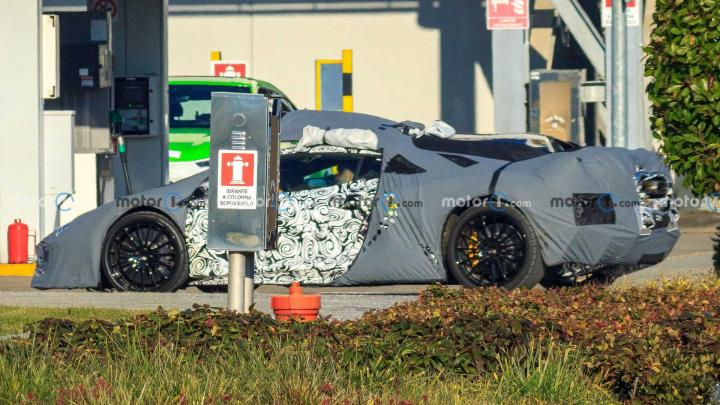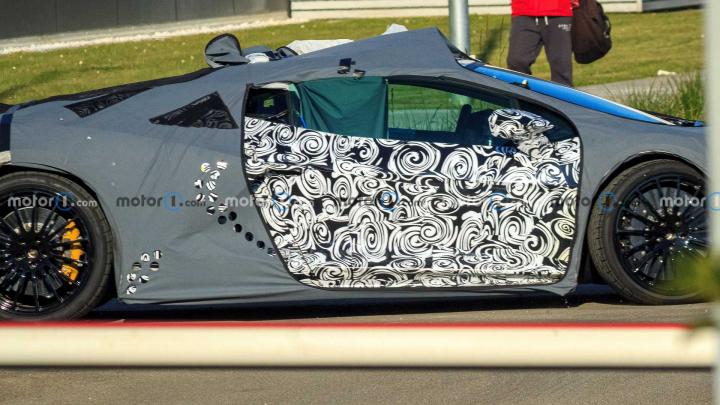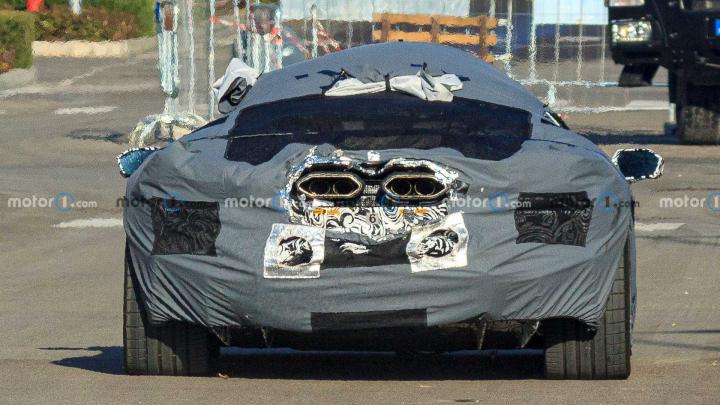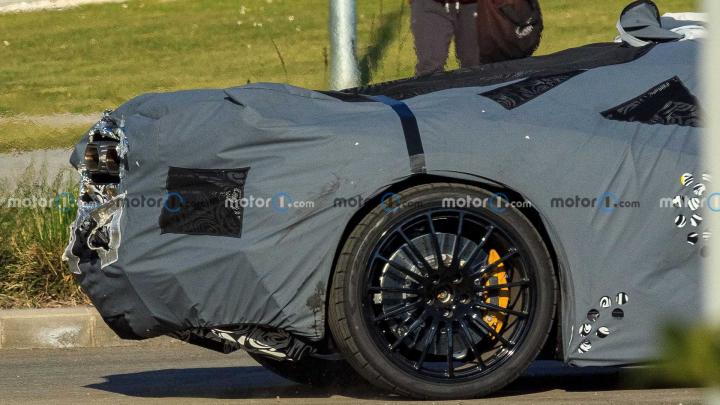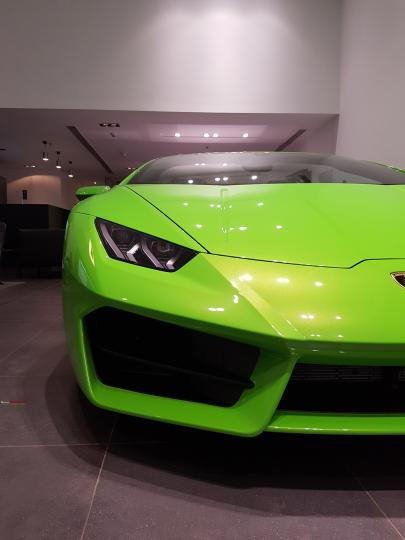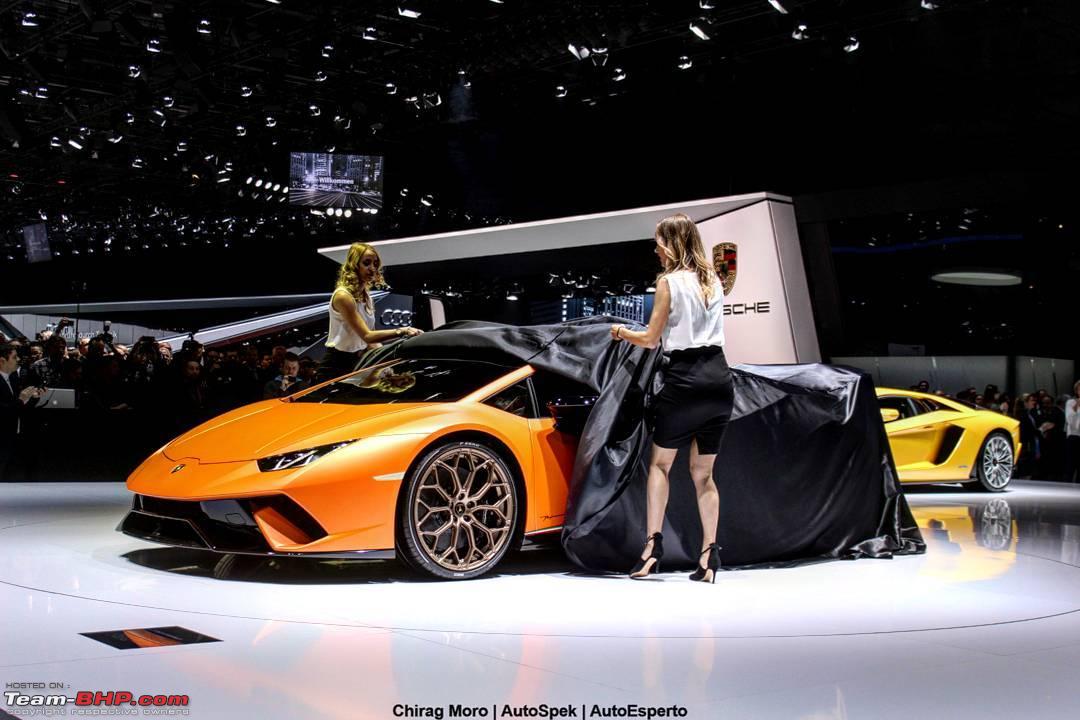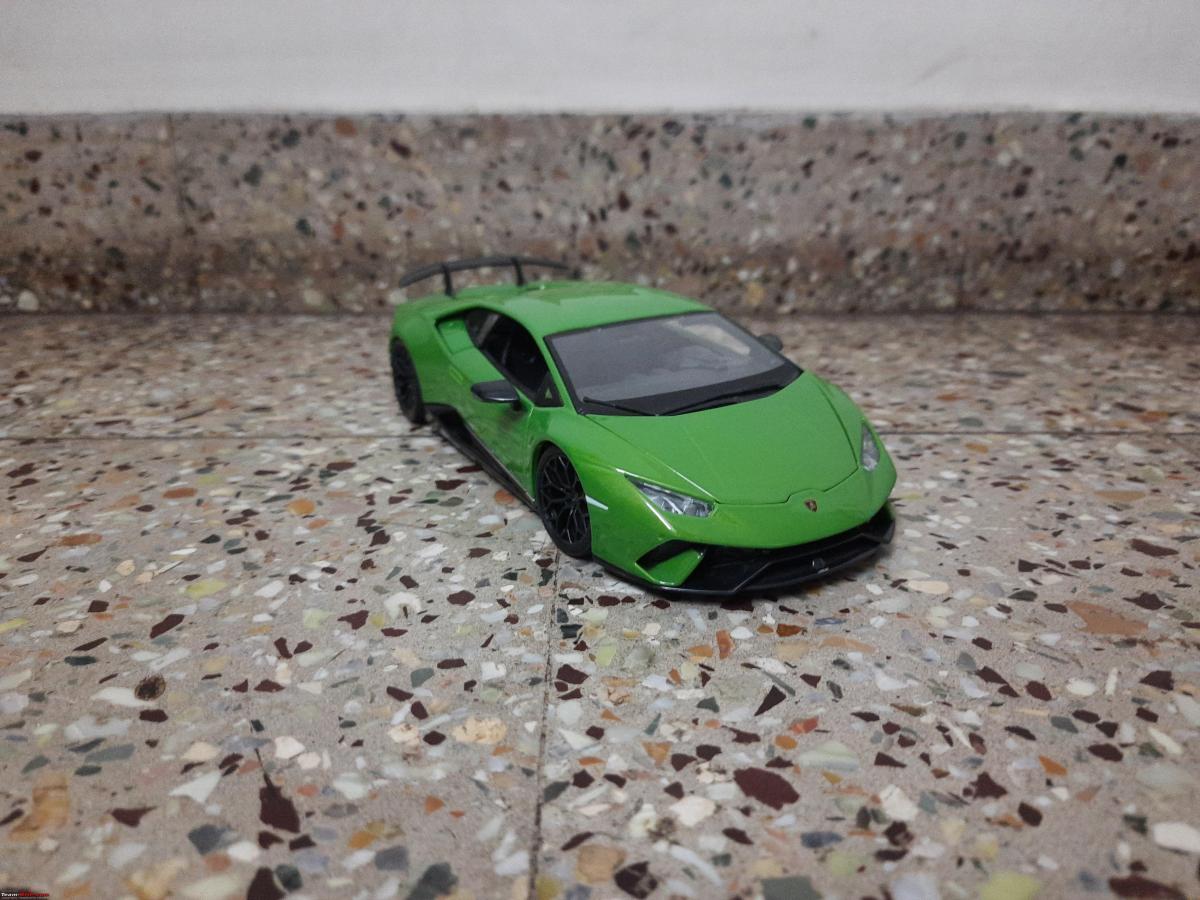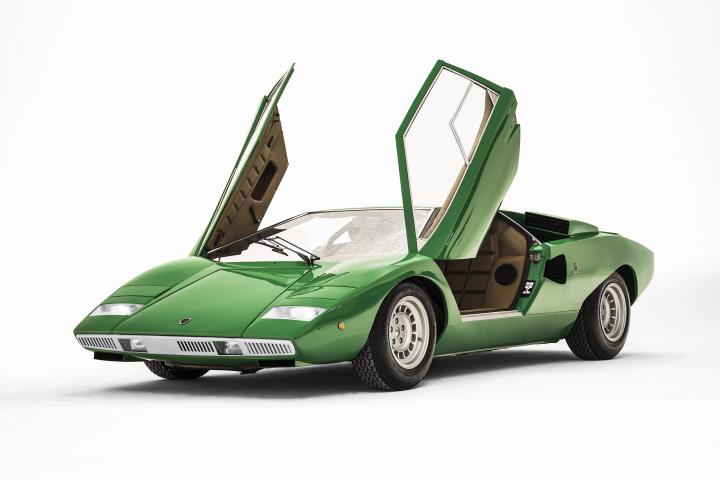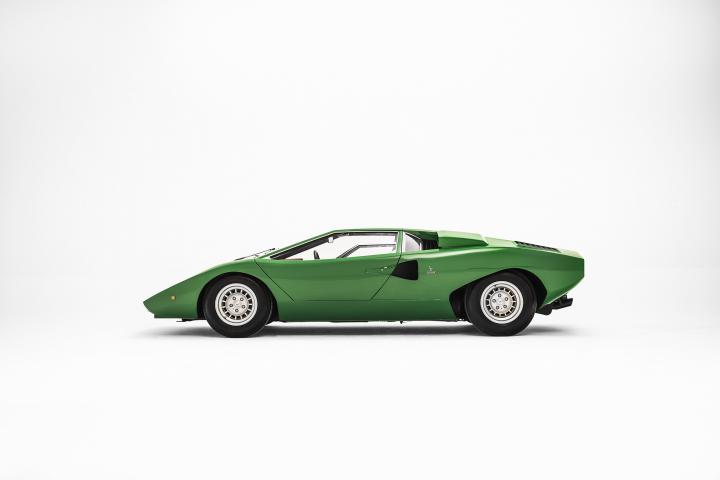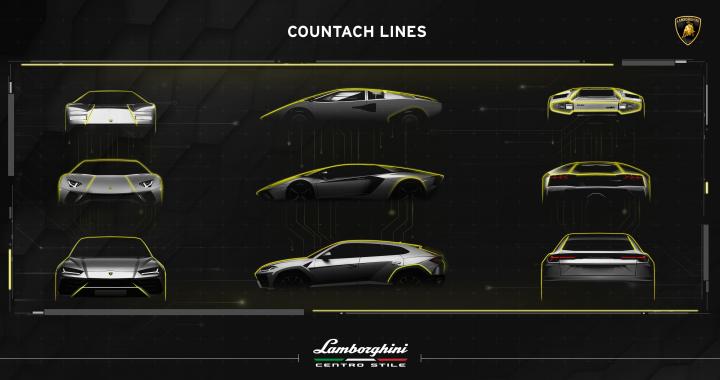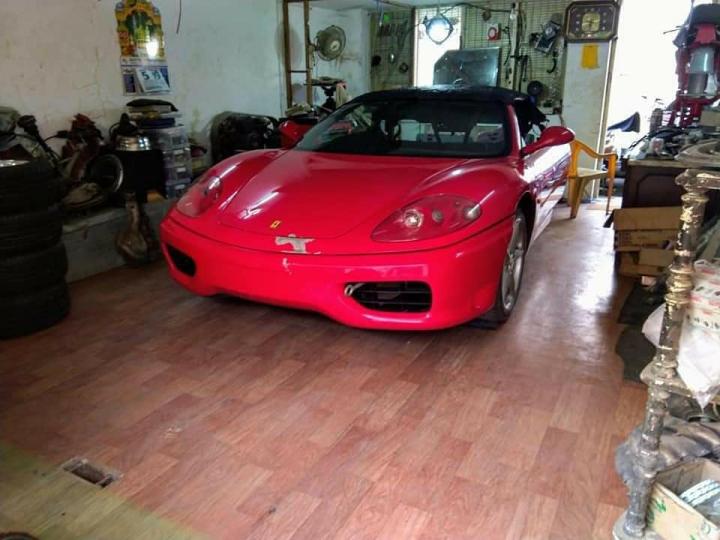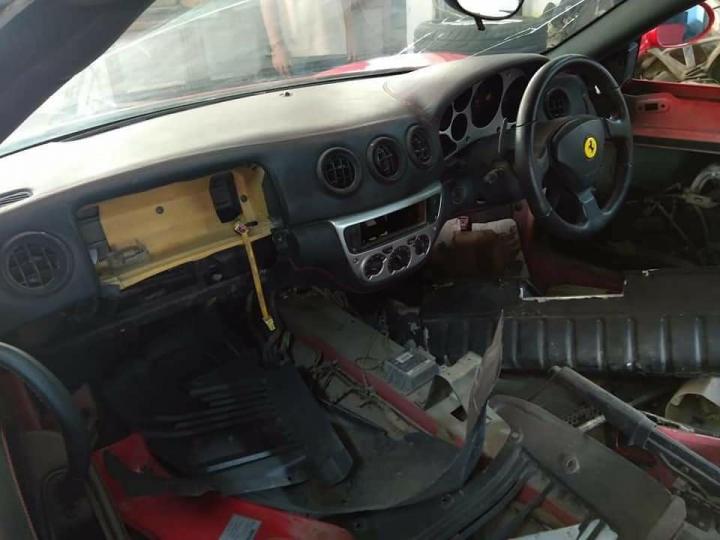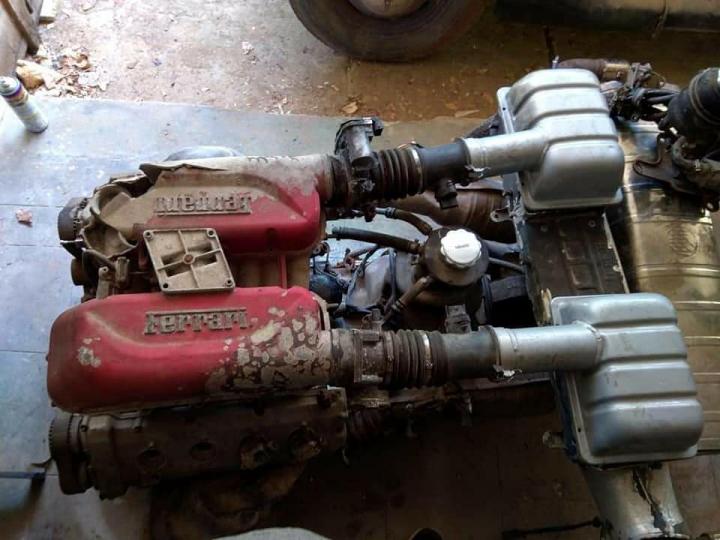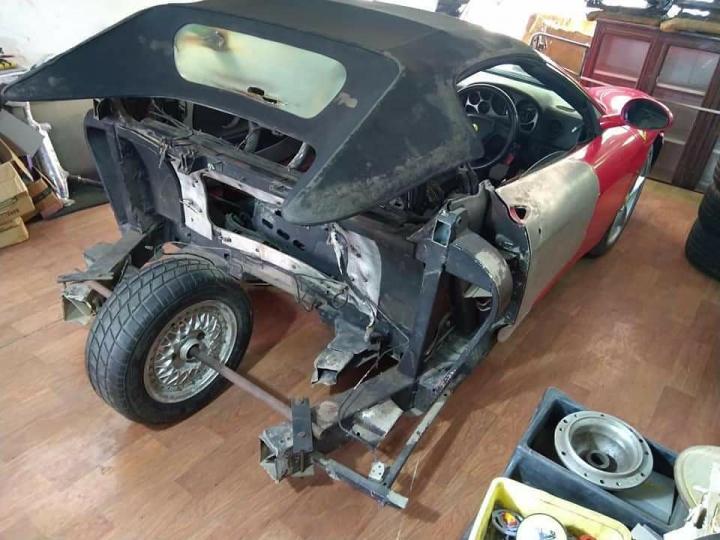News
Lamborghini registers record sales of 8405 units in 2021
The Lamborghini Urus remained the best-selling model with 5,021 units sold.
Italian supercar manufacturer Automobili Lamborghini has announced that it has registered its highest-ever sales in 2021. The brand is said to have recorded 8,405 units worldwide, translating to a YoY growth of 13%.
The company also registered double-digit growth in all its major markets - 14% in America & Asia Pacific and 12% in Europe, the Middle East and Africa. The USA was the carmakers top-selling market with 2,472 units, followed by China and Germany with 935 and 706 units, respectively. Lamborghini also stated that it recorded 359 units in its home market, a 3% growth compared to the previous year.
As expected, the Lamborghini Urus remained the best-selling model with 5,021 units, followed by the Huracan with 2,586 units. The outgoing V12-powered Lamborghini Aventador registered 798 units as well.
- Tags:
- Indian
- Sales
- Supercars
- International
News
Ferrari F40: 15-year ownership experience of an icon!
While the 288 GTO is a very special car, the F40 was the better driver’s car and more of an experience.
BHPian SSO recently shared this with other enthusiasts.
We have owned our Ferrari F40 for just over 15 years now. This is twice as long as I have ever owned any other car. In those 15 years, I’ve driven it 30,000 miles across 11 different countries. The F40 has had one major engine rebuild, two new clutches, and one new set of fuel cells. Our various adventures over the years are well documented both on Karenable.com and in a few issues of EVO Magazine. I’ve taken the F40 on the track in several different countries and have run it flat out down the autobahn. The longest single-day drive I have done in it was Nice to Madrid in a bit under 9 hours. The F40 has been driven across the Swiss Alps and up a goat path in Wales. Needless to say, our F40 has led a full life in the last 15 years and is about as far from being a garage queen as you can get.
How we ended up with the F40 is a bit of a convoluted story. It started with a test drive of a Dino 246 GT in the countryside outside of Brussels. While the test drive was far from the success the conversation back in the garage turned out to be most fortuitous. In the barn where the Dino was kept, there were also two F40s. After we established that the Dino 246 GT wasn’t going to work due to both my longish legs and a missing 2nd gear, the conversation shifted quickly to the two imposing F40s. It was the 1st time I had ever seen a pair up close, and the highly knowledgeable broker took me through both cars and pointed out the differences as one was a very early production sliding Plexi window F40, and the other a late cat & adjustable suspension F40. Neither of the F40s was for sale at the time and the brokers parting words were if you are interested in an F40, I would act quickly as prices are about to start rising again. Wise words.
Roll forward a few months and the search for an F40 was on. At that point, I hadn’t settled completely on the F40, a 288 GTO was also under consideration. Back then, the 288 GTO was the less valuable of the two cars. As values hadn’t gone through the roof yet, dealers would still let you take them out on test drives. It was after test driving a couple of 288 GTOs and F40s that the decision was made to pursue an F40. While the 288 GTO is a very special car, the F40 was the better driver’s car and more of an experience. As special as the 288 GTO is, it does feel a bit like a 328 GTB on steroids. The F40 on the other hand will never be mistaken for anything else.
After looking at a number of different F40s, the one I finally settled on was a very late production, a two-owner car that had been originally delivered in Rome. The second owner had the car in Germany and I bought it from Eberlein Ferrari in Kassel. The negotiations on the car took several months and were an exercise in patience. We finally agreed on the deal which included part exchanging my Ferrari 550 Maranello. The 550 was in Portugal at the time and the plan was to drive it from Lisbon to Kassel, swap it for the F40, and then drive the F40 to Madrid where I had an apartment at the time. The story of that trip is: 1st Four Days in the F40.
After that very memorable 1st trip, we have had a wonderful succession of different experiences with the F40 over the years. A few of the more memorable ones are captured in a few articles posted on karenable including - Return to Maranello with 40 other F40s, epic drive across France, and across the Alps to Tuscany. Some of the highlights from those trips include being on the track at Mugello with several dozen other F40s, having the Italian police clear traffic for us on the Autostrade, crossing the Alps with temperatures still below freezing in late June, and hustling the F40 down stunning D roads in southern France. There have been numerous other road trips in Spain, Germany, Portugal, France and the UK. The F40 has navigated narrow Welsh B roads, been driven across the moors of Devon, and been driven up a glorified goat path in the Brecon Beacons. It’s also been run across a number of Alpine passes which still rates as some of the most challenging and exhilarating driving I have done in the car. The F40 also featured in one of EVO Magazines more memorable articles when Henry Catchpole and Dean Smith drove it back to the UK from Switzerland for me.
Here's what BHPian Asish_VK had to say on the matter:
Holly Molly!
Never in my wildest dream, I thought I will read an F40 ownership review/update in Team-BHP.
Thanks for sharing the experience with us mere mortals.
Here's what BHPian CLIX had to say on the matter:
Thanks for sharing that very interesting article.
The F40 has lots of fun memories for me. No, not because I ever owned one, but because I fell for that design the moment I received the Indian Auto Journal with an F40 centre-spread, sometime in 1987-88 I think. I requested my mother, who used to paint, to paint me one. Not the road-going version. The one that would go "Where no man has gone before". [ Too much Star Trek on a young impressionable mind I guess! ]
Here's the pic attached. And is on display till this day, on my study wall.
Pardon the distraction from your post. Thought this might be of interest.
Here's what BHPian androdev had to say on the matter:
Lovely to see this post! Your blog is awesome - rarely get to read about these cars from the owners who actually use them. I thought it's Kar-enable till I read the explanation of the name. There is a guy-next-door feel to the blog which is surreal when you consider the cars being discussed!
Check out BHPian comments for more insights and information.
- Tags:
- Indian
- F40
- Supercars
- Car ownership
News
Lamborghini Aventador replacement spotted for the first time
The new Lamborghini Aventador replacement is expected to be globally unveiled in 2023.
Lamborghini unveiled the Aventador Ultimae earlier this year, said to be the final iteration of the naturally-aspirated V12 supercar. Now, a fresh set of spy images have surfaced showcasing a new supercar from Lamborghini, that could be a direct replacement to the Aventador.
According to reports, the spy images of the new Lamborghini Aventador replacement showcase an actual production prototype of the upcoming supercar rather than a test mule. The Aventador replacement can be seen covered in heavy camouflage, revealing little to no details of its design. However, it does carry forward the brand's trademark wedge-shaped styling.
The spy images do showcase the large doors which, like in the Aventador and many other models before, are expected to come with scissor-opening hinges. The rear, although covered, does showcase the centrally-mounted dual hexagonal exhaust outlets.
The new Lamborghini supercar will be offered with a plug-in hybrid powertrain, with the electric motor and batteries mated to a mid-mounted V12 engine - completely different from the one being used on the Aventador.
The new Lamborghini Aventador replacement is expected to be globally unveiled in 2023.
Source: Motor1
News
Ferrari Daytona SP3 supercar unveiled
The Icona supercar from the Italian carmaker will be limited to just 599 units and will be offered at a base price of 2 million euros.
Ferrari has unveiled its latest Icona supercar, called the Daytona SP3. The name for the limited-edition supercar has been inspired by the 1967 24 Hours of Daytona, where the brand's race cars finished 1-2-3.
In terms of design, the Daytona SP3 pays homage to some iconic models of the past. It combines those design elements with many modern touches all around. The overall shape of the Daytona SP3 is said to have been inspired by the 330 P3 and P4 models of the 1960s. The front end is characterised by a sculpted nose section with sleek LED headlamps, while the rear is dominated by horizontal strakes similar to classic race cars.
The interior is all-new, and like the exterior, incorporates a lot of elements inspired by past race car models. The dashboard offers a clean and minimalistic look, while the seats are wrapped in Blue Alcantara - another nod to Ferrari's old race cars.
Powering the Ferrari Daytona SP3 is a heavily-tuned version of the 6.5-litre V12 engine found in the 812 Competizione. The upgraded engine now produces 850 BHP and 697 Nm - making it the most powerful naturally-aspirated engine on a road-going Ferrari. The engine is mated to a 7-speed dual-clutch automatic transmission. Ferrari claims that the Daytona SP3 is capable of sprinting from 0 - 100 km/h in 2.85 seconds.
The Icona supercar from the Italian carmaker will be limited to just 599 units and will be offered at a base price of 2 million euros.
- Tags:
- Indian
- International
- Supercars
News
Coming of age with the Lamborghini Huracan
When we speak of the beginning of supercars or sports cars in India, I often associate it with Porsche. Lamborghini came in 2006 with the Gallardo & the mighty Murcielago.
BHPian hey.rudey recently shared this with other enthusiasts.
Hi everyone,
First off, a huge thank you to all fellow Team-BHP members, my family and friends, and peers who read my post about the GLA35 AMG. The support was overwhelming, and it has inspired me to write this post and many more in the future.
When we speak of the beginning of supercars or sports cars in India, I often associate it with Porsche. Their old dealership at Kemps Corner and the 997s parked inside is still fresh in my mind; especially the white paint, 5-spoke wheels and the immortal silhouette of a 911. The 997s were brilliant and I am a sucker for them, but they are rather reticent in nature. You would see one on the road, but they would only stay with you in your memory if you were a Porsche fan.
Then came Lamborghini in 2006 with the Gallardo, and the mighty Murcielago. Spotting one of these on the road was like spotting a unicorn, as there were very few takers for them back then. I had seen more Ferraris and Bentleys, which made my fascination for them grow. But this was about to change with the launch of the Huracan. This car truly changed the supercar culture in India, and the numbers it would be seen in when compared to its predecessors and competition.
It is the evening of 29th April 2016. I somehow managed to strong-arm my Dad into taking me along with him for his meeting with the dealership. I remember meekly walking into the dealership. I was trying to suppress my excitement, but couldn’t control it by the time I had walked up to the Blu Caelum LP610-4 that was parked inside.

The Blu Caelum demo car
This car was in my dream spec, and here it was sitting as a demo car. Back then the LP610-4 felt like a Thespian, emitting the same aura the Murcielago had. The shape and design inspiration felt very close, but somehow the car looked meaner. My tryst with the Huracan had begun and every encounter with the car was special.

Dad with a Giallo Orion LP610-4 at the dealership launch
Soon Dad would do the Huracan Spyder and dealership launch, and the RWD LP580-2 was here on Indian soil. When I had visited the dealership next, there was a tandem of specifications in front of me. Gone was the Blu car, and in was the aero kitted Giallo Inti LP610 and a Verde Mantis RWD Spyder. You could see how different the two cars were. While the LP610 was a castellan of the brand’s wedge-shaped past, the LP580 was the pensive performer. The car was more engaging and ensured to keep you on your toes. What it lacked in power, it made up with its tail-happy nature. The aero kit for the Huracan, to be honest, is one’s personal choice. I personally found it to be silly, as Lamborghini themselves never quoted any real numbers, even after tunnel testing the kit.
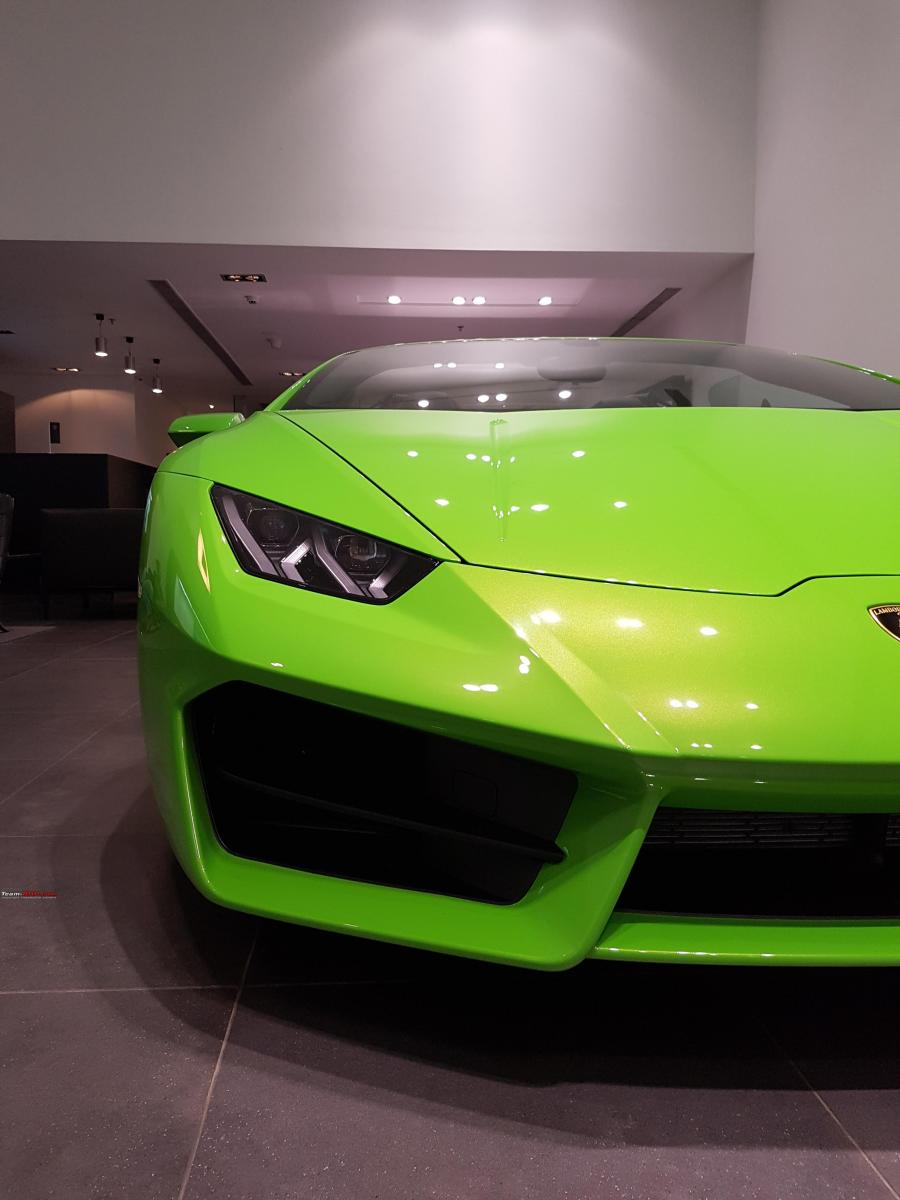
Verde Mantis LP580-2 Spyder

Giallo Inti LP610-4 and its key fob
The next Huracan to make it to India was the LP640-4 Performante, my favourite Huracan before its RWD successor came along (more on that below). It is one of those cars, where you see it and somehow music starts playing in the background (for me it is “Harder, Better, Faster, Stronger” by Daft Punk). The first car to use the ALA (Aerodinamica Lamborghini Attiva) system, where the two spoiler systems (front and back) can decide the aerodynamic mapping while taking a corner. The rear wing flap mechanism was designed adroitly. While most spoiler mounts serve a singular purpose, the ALA mounts have a hollow interior, allowing air to flow from the flaps to the rear wing, while independently determining the downforce of each rear wheel. In combination with steering and braking input, the car can alter the grip for the inner and outer sides, controlled by the driver’s accelerator input. The car can produce 770 pounds (350 kg) of downforce in low drag mode at 202 mph.

Verde Mantis LP640-4 Performante; Picture Courtesy: Lamborghini Mumbai
The pre-facelift models (along with the Aventador LP700-4 and LP750-4 SV) in my humble opinion, were the last of the pompous coloured mean machines, with the bombast of the simple mean design. The driver was still in command on the road, despite an intelligent AWD (Haldex Gen. V) system. The intelligence of the machine would adapt and nudge for you; not do the whole task by itself. It possessed the charm of any old-world car; with a gauge pod on its centre console. I had observed the attraction to the Huracan once when I was convoying with the Giallo Inti car from the passenger seat of a 718 Boxster. The pre-facelifts titillate the senses visually with their huge intakes and iconic wedge shape and will remain a poster hero for many born a little after me.
Evolution is a never-ending process. The Huracan had to undergo the same. With a new dealership and new energies, the Evo was finally here in 2019. Dad saw it in the showroom, I saw it on the streets. The new car now had the engine from the Performante, and a couple of goodies from its family in the north. The Huracan now had 4 wheel steering and torque vectoring. In the interior, the gauge pod was gone and the infotainment system from the Sian was present. The car had become… a computer. Aerodynamics had improved, with the car producing more than 6 times the downforce of an LP610.
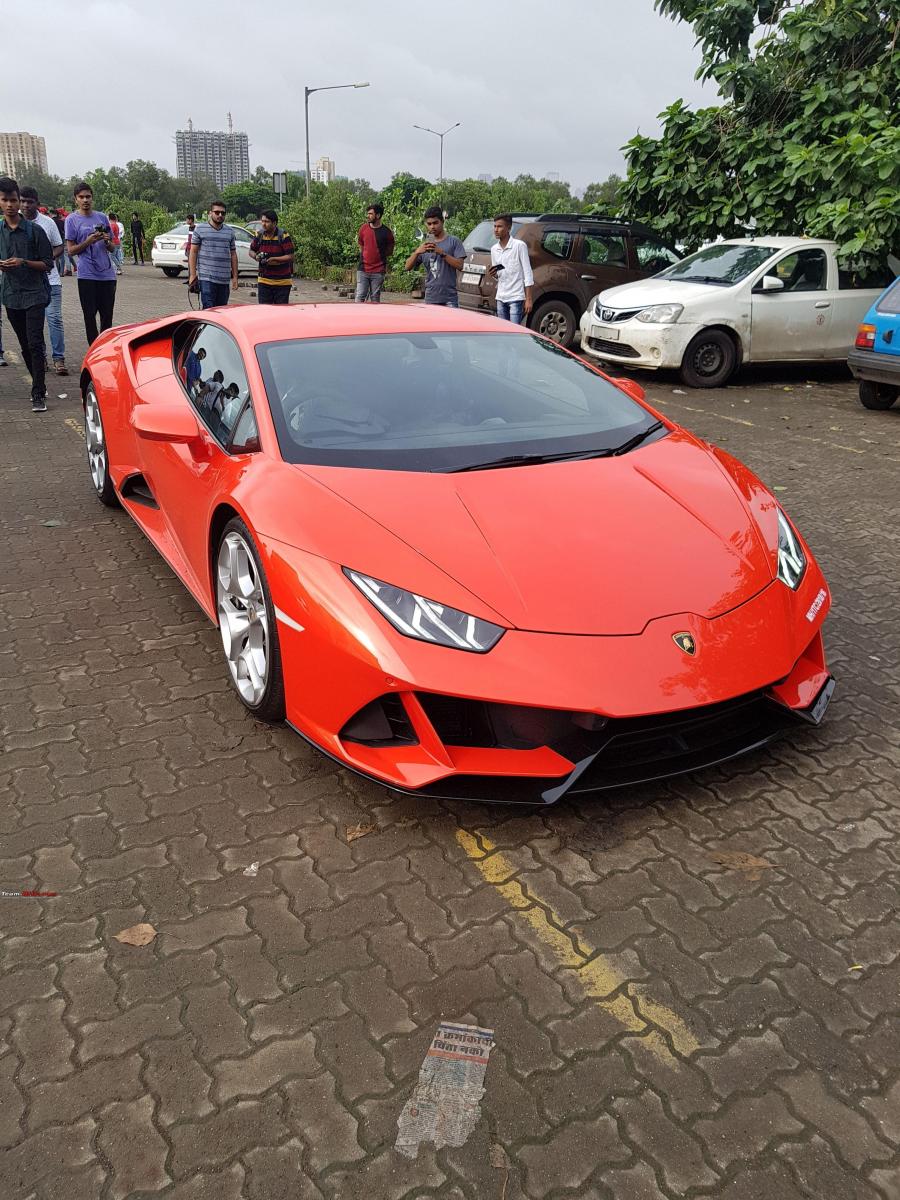
Huracan Evo at the T97 Independence Day Drive, 2019
Not everything about the Evo is a diatribe, to be fair. The RWD was back with a funky tagline. It now had a respectable 600 hp and looked sharper than a Japanese craft knife. Where the Evo felt like a Rolex, the Evo RWD was a Doxa Diver. Suddenly, all the funky colours were found on these models such as the Viola 30 and Viola Mel. The Aesir wheels are beautiful, just like the Giano wheels released before them.

Evo Spyder at its launch
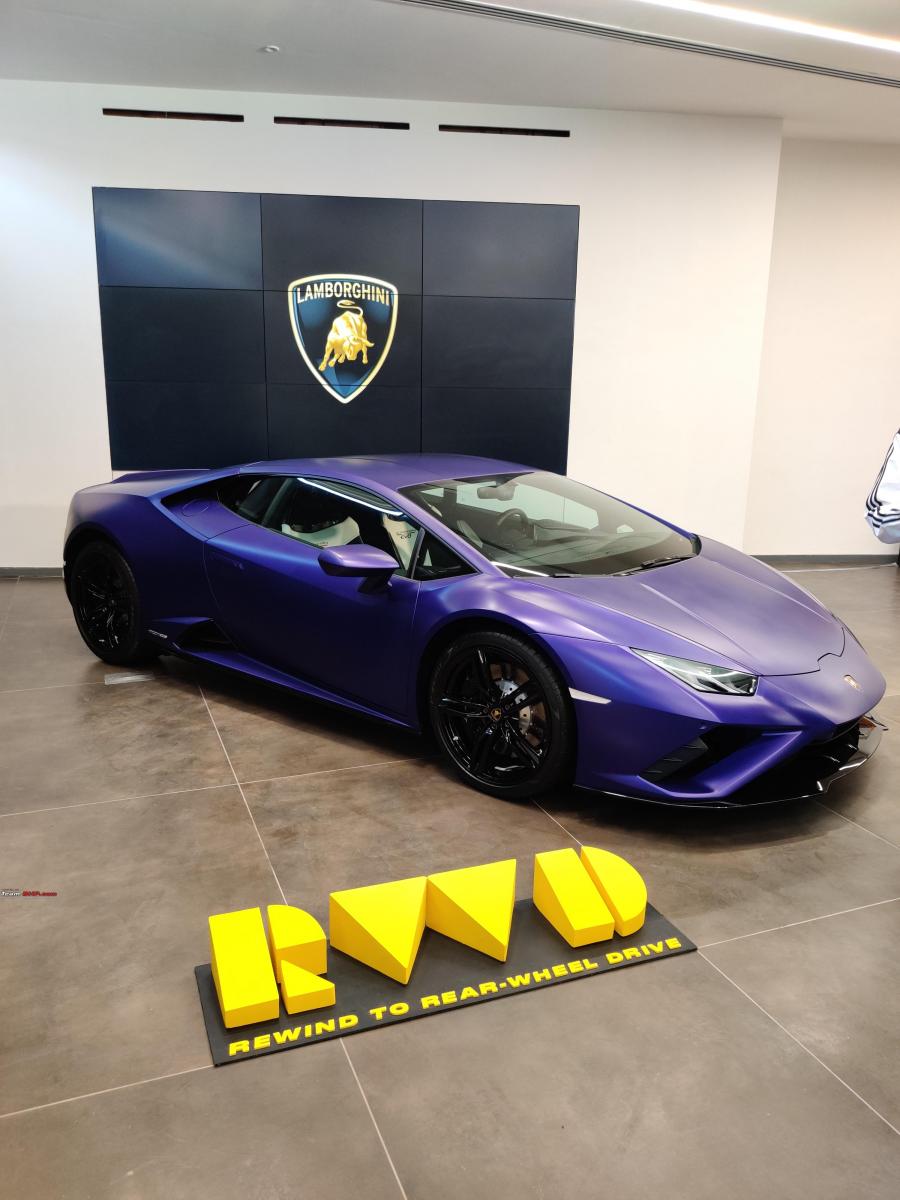
Viola Mel Evo RWD at its launch

Viola 30 Evo
And soon, the STO was here. The car is barely road legal. The windscreen is 30% lighter. The interior doesn’t have a shred of leather. The carbon bucket seats are too upright and will get uncomfortable. But none of this mattered. This was a Super Trofeo for the road. Lamborghini had made a rare RWD cocktail. When I spoke with Team Lamborghini Mumbai, they thoroughly explained the details of the car to me. Except for the doors, every panel was replaced with carbon fibre ones. The car would be 80% close to its Super Trofeo Evo and GT3 brethren when on the track. Magnesium alloys kept the car aloft and titanium exhausts sprouted from the back. Some people found the car to be too tame in design when compared to the race cars, I found it to be maniacal; especially the shark fin at the back. And don’t get me started on the aerodynamics. The car will no way molly-cuddle you in any manner. It may be 43 kgs lighter than the Performante, it produces 992 pounds (450kg) of downforce at 192 mph (low downforce setting). The Huracan was back to basics once again, and the Blu Notte had brought back the same nostalgia I had felt back in 2015! I couldn't stop smiling that evening right until the moment I went to bed.

Me standing beside the STO

Blu Notte STO
The flaw of the Huracan is rather obvious when compared to the competition. Since 2014, the car has never crossed the 640 hp mark while Ferrari progressed from the 661 hp V8TT 488 to the 830 hp hybrid V6 296 GTB. I am all for the old school natural aspiration, but just this cannot suffice when the competition goes from the Ferrari 488, Mclaren 650S and briefly the SLS AMG; to the Mclaren Artura, 570S and the Aston Martin DB11. One more problem that the Huracan faces is that it is the choice weapon of literally every YouTuber or influencer. You buy a Lamborghini to be different, not to create a hive mind of similar performance and modifications. While thankfully this hasn’t been the case in India, this will forever stain the image of the Huracan for years to come.
Overall, the entire Huracan line will forever be cemented as one of the last soldiers of the naturally aspirated era. It filled the lacuna of raw engine power and raw styling. Whether you wanted a top-down sports car, a mountain pass explorer, or a highway annihilator; the Huracan did it all with ease. With each passing day, my love for the older car grows. The Huracan has been a huge part of my teenage epoch, and I can solemnly say that there will no longer be a car like this anymore. It showed me change, grace and peace in money when life would get hectic or repetitive. Each and every detail of the car is engraved in my memory, and every time I pass the dealership, I stop just to gaze at it once more. The shades, the styling and the explosion the Huracan brought with it, cannot be replicated again. The passion for supercars it brought to our peninsula, will be forever enshrined in gold. A Ferrari may be suave, but a Lambo will always intimidate.

My keychain marking the dealership launch
Here's what BHPian ChiragM had to say about the matter:
I must first admit that I was never a fan of the Huracan, and I still am not a fan of the 610-4, but I do love the exhaust note. However, things changed when I glanced up a red RWD with black wheels at a showroom somewhere in California.
This very car made me fall in love with the 580-2.
Regardless, when the Huracan was launched, I had just started writing about cars. Back in 2015, I wrote an article on the Huracan from whatever bits I could find from their media site.
I had the opportunity to attend the launch of the Huracan Performante in 2017 while covering the Geneva Motor show, and like you, this is my favourite model to date, followed by the 580-2. Got up close and personal with the launch-spec Performante that day.
Here's my 1:18 model by Maisto.
I had not followed the launch of the Evo, so I am surprised to read that the supercar had so many changes over the first Huracan. Thanks for this info.
Would love to experience a ride in this car someday.
Check out BHPian comments for more insights and information.
- Tags:
- Indian
- Lamborghini
- Huracan
- Supercars
News
Ferrari offers up to 15-year warranties on its sports car
The extended warranty is said to be available for both new and pre-owned Ferrari models.
Italian supercar brand, Ferrari, offers its customers a warranty of up to 15-years on its sports cars. The Maranello-based carmaker introduced the extended warranty sometime back, calling it 'Power15'.
As per the company, all Ferrari models come with a standard 3-year warranty. The company also offers a 12-year extended warranty period, which can be further extended by 12 months and renewed annually for up to 3 years.
The extended warranty is said to offer coverage for all of the vehicle's main mechanical components for the entire 15-year period. Some of the mechanical components covered under warranty include the engine, gearbox, PTU, suspension & steering.
Ferrari is also said to offer an extended warranty on both new and pre-owned models. Even cars with expired coverage or gaps in their cover are said to be eligible for the extended warranty offer.
The Italian carmaker aims to make the 'Power15' extended warranty offer the most flexible and comprehensive package in the segment.
News
All-new Ferrari 296 GTB unveiled with a plug-in hybrid V6
The new Ferrari 296 GTB sits below the SF90 Stradale and is said to be a spiritual successor to the Dino.
Ferrari has unveiled its all-new 296 GTB model globally. The new Ferrari 296 GTB is the brand's latest plug-in hybrid supercar, positioned below the SF90 Stradale. The new 296 GTB is also the first modern Ferrari to feature a V6 engine, making it the spiritual successor to the Dino.
The Ferrari 296 GTB is a 2-seater Berlinetta powered by a 3.0-litre V6 engine mounted in the middle. The 2996cc 6-cylinder engine is said to produce 645 BHP and is paired to an electric motor, boosting its power output to 819 BHP and 740 Nm. The engine is said to churn out 218 BHP per litre - the highest for any production car. The hybrid powertrain sends power to the rear axle via an 8-speed dual-clutch automatic gearbox.
In terms of performance, the new Ferrari 296 GTB is said to be capable of accelerating from 0 - 100 km/h in 2.9 seconds and has a top speed of 330 km/h. The supercar also has an electric-only range of 25 km.
The new Ferrari 296 GTB features a clean and minimalistic design. It borrows styling elements from a number of older Ferrari models, such as the 250 LM from 1963. There are also design elements from some more modern Ferraris as well, including the SF90 Stradale and Roma. The new V6 supercar also features an active aero spoiler, offering 360 kg of downforce at 250 km/h.
Inside, the 296 GTB is a typical Ferrari, with a clean and simple dashboard layout. It now features the brand's latest digital instrument cluster, a new steering wheel with haptic controls and a small touchscreen for the passenger.
Ferrari will be offering the 296 GTB with optional Assetto Fiorano Pack. This offers a bunch of additional carbon fibre parts, along with Lexan windows to reduce weight. It also features a special livery, while running on stickier Michelin Sport Cup 2 tyres.
The Maranello-based supercar brand is yet to announce the pricing for the new 296 GTB. Once introduced in the international markets, the Ferrari 296 GTB will take on the likes of the McLaren Artura.
News
New Ferrari supercar with a V6 hybrid powertrain in the works
The new Ferrari supercar will be the first model after the 'Dino' to feature a V6 engine.
Ferrari is said to be working on a new mid-engined hybrid supercar. The new model from Ferrari is expected to come powered by a V6 engine paired with a plug-in hybrid system.
Ahead of its global unveil, the new Ferrari supercar, codenamed 'F171', has been spotted testing at Maranello, Italy. The spy pics showcase a heavily camouflaged Ferrari revealing very little design details of the upcoming hybrid model. However, the prototype is said to be carrying near-production ready bodywork, along with a set of fake exhaust pipes at the rear.
Coming to its powertrain, reports suggest that the upcoming Ferrari supercar will be powered by a 3.0-litre turbocharged V6 engine paired with a single electric motor. The supercar is expected to come with a rear-wheel-drive system only; unlike the SF90 Stradale which features an all-wheel-drive system.
The exact power output of the hybrid powertrain is yet to be revealed, although reports do suggest it to be in the range of 700 BHP. This V6 hybrid powertrain will also be used to power a number of future products from the brand, including Ferrari's first-ever SUV, the Purosangue.
The upcoming supercar from the Italian brand is expected to be unveiled sometime later this year, with an international launch in early-2022. Once introduced, the new supercar will be the first V6-powered Ferrari model since the 'Dino'. It will take on rivals such as the McLaren Artura.
Source: Carscoops
- Tags:
- Indian
- Supercars
- spyshots
- International
News
See how the iconic Countach inspires modern Lamborghinis
The Countach might be turning 50 this year, but its design still influences modern Lamborghinis.
The Lamborghini Countach might be turning 50 this year, but its design remains iconic to this day. The styling elements seen on the Countach, make it instantly recognisable even today.
Back in the 1970s, the design of the Countach was considered to be extremely futuristic. The iconic supercar itself was influenced by the trends and achievements of its time. This included the beginning of the jet race, trends in fashion linked to geometric patterns, the advent of modern computers and the explosion of colours. All these elements influenced Marcello Gandini, the chief designer of the Countach.
The Countach's design would go on to influence every subsequent Lamborghini model to date. The brand's current models - the Aventador, Huracan, Sian and the Urus, all take inspiration from the design of the Countach.
The Lamborghini Countach became iconic for its design elements such as the diagonal lines on the bonnet and the rear engine compartment, the low and square-shaped cabin and the sloping windscreen. These elements can still be seen in various interpretations on all the models following the iconic supercar.
- Tags:
- Indian
- Supercars
- International
- Design
News
Crashed Ferrari 360 Spider to be restored
The car burst into flames upon impact and suffered extensive burn damage to the body and internals.
Of the handful of Ferrari 360s present in the country, one was destroyed in an accident in 2006. The car burst into flames upon impact and suffered extensive burn damage to the body and internals. Now, according to an Instagram post, the current owner of the supercar has decided to restore it.
From the pictures posted, it is clear that the restoration will not be easy. While the front part of the vehicle has suffered minimal damage, the rear has been completely destroyed. The interior lies in ruins with missing parts and the engine has extensive burn damage. The front right door has also been damaged. The entire rear section of the car, including the chassis, is missing and is held up by a temporary wheel. The fabric soft-top will also need to be replaced.
It is believed that there are just 4 Ferrari 360s in the country, out of which 3 are convertibles.
Source: Car Crazy India
Pages










